Mengshen He
SwinECAT: A Transformer-based fundus disease classification model with Shifted Window Attention and Efficient Channel Attention
Jul 29, 2025Abstract:In recent years, artificial intelligence has been increasingly applied in the field of medical imaging. Among these applications, fundus image analysis presents special challenges, including small lesion areas in certain fundus diseases and subtle inter-disease differences, which can lead to reduced prediction accuracy and overfitting in the models. To address these challenges, this paper proposes the Transformer-based model SwinECAT, which combines the Shifted Window (Swin) Attention with the Efficient Channel Attention (ECA) Attention. SwinECAT leverages the Swin Attention mechanism in the Swin Transformer backbone to effectively capture local spatial structures and long-range dependencies within fundus images. The lightweight ECA mechanism is incorporated to guide the SwinECAT's attention toward critical feature channels, enabling more discriminative feature representation. In contrast to previous studies that typically classify fundus images into 4 to 6 categories, this work expands fundus disease classification to 9 distinct types, thereby enhancing the granularity of diagnosis. We evaluate our method on the Eye Disease Image Dataset (EDID) containing 16,140 fundus images for 9-category classification. Experimental results demonstrate that SwinECAT achieves 88.29\% accuracy, with weighted F1-score of 0.88 and macro F1-score of 0.90. The classification results of our proposed model SwinECAT significantly outperform the baseline Swin Transformer and multiple compared baseline models. To our knowledge, this represents the highest reported performance for 9-category classification on this public dataset.
Summary of ChatGPT/GPT-4 Research and Perspective Towards the Future of Large Language Models
Apr 08, 2023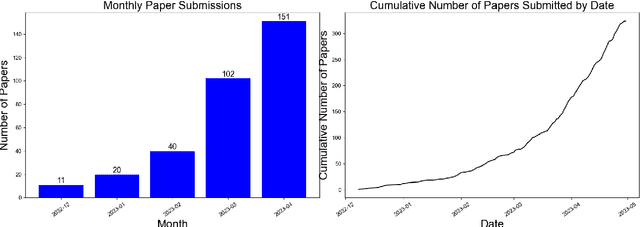
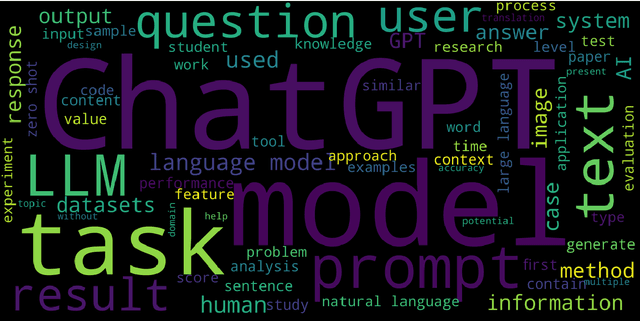

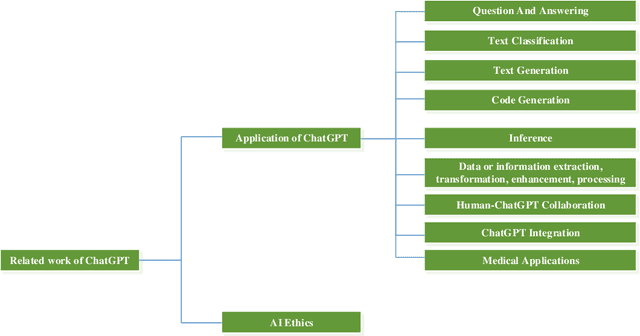
Abstract:This paper presents a comprehensive survey of ChatGPT and GPT-4, state-of-the-art large language models (LLM) from the GPT series, and their prospective applications across diverse domains. Indeed, key innovations such as large-scale pre-training that captures knowledge across the entire world wide web, instruction fine-tuning and Reinforcement Learning from Human Feedback (RLHF) have played significant roles in enhancing LLMs' adaptability and performance. We performed an in-depth analysis of 194 relevant papers on arXiv, encompassing trend analysis, word cloud representation, and distribution analysis across various application domains. The findings reveal a significant and increasing interest in ChatGPT/GPT-4 research, predominantly centered on direct natural language processing applications, while also demonstrating considerable potential in areas ranging from education and history to mathematics, medicine, and physics. This study endeavors to furnish insights into ChatGPT's capabilities, potential implications, ethical concerns, and offer direction for future advancements in this field.
Discovering Dynamic Functional Brain Networks via Spatial and Channel-wise Attention
May 31, 2022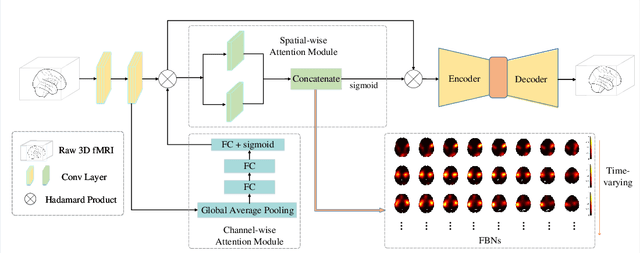
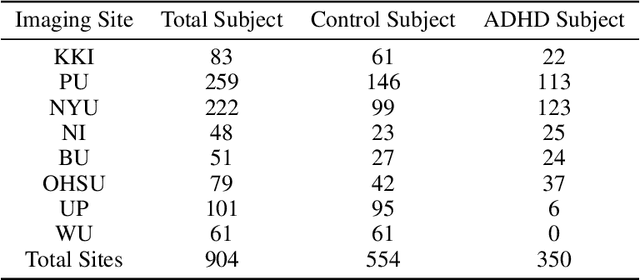


Abstract:Using deep learning models to recognize functional brain networks (FBNs) in functional magnetic resonance imaging (fMRI) has been attracting increasing interest recently. However, most existing work focuses on detecting static FBNs from entire fMRI signals, such as correlation-based functional connectivity. Sliding-window is a widely used strategy to capture the dynamics of FBNs, but it is still limited in representing intrinsic functional interactive dynamics at each time step. And the number of FBNs usually need to be set manually. More over, due to the complexity of dynamic interactions in brain, traditional linear and shallow models are insufficient in identifying complex and spatially overlapped FBNs across each time step. In this paper, we propose a novel Spatial and Channel-wise Attention Autoencoder (SCAAE) for discovering FBNs dynamically. The core idea of SCAAE is to apply attention mechanism to FBNs construction. Specifically, we designed two attention modules: 1) spatial-wise attention (SA) module to discover FBNs in the spatial domain and 2) a channel-wise attention (CA) module to weigh the channels for selecting the FBNs automatically. We evaluated our approach on ADHD200 dataset and our results indicate that the proposed SCAAE method can effectively recover the dynamic changes of the FBNs at each fMRI time step, without using sliding windows. More importantly, our proposed hybrid attention modules (SA and CA) do not enforce assumptions of linearity and independence as previous methods, and thus provide a novel approach to better understanding dynamic functional brain networks.
 Add to Chrome
Add to Chrome Add to Firefox
Add to Firefox Add to Edge
Add to Edge